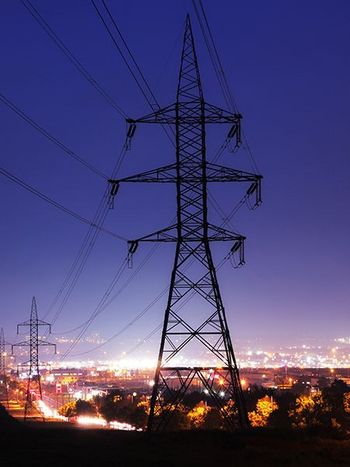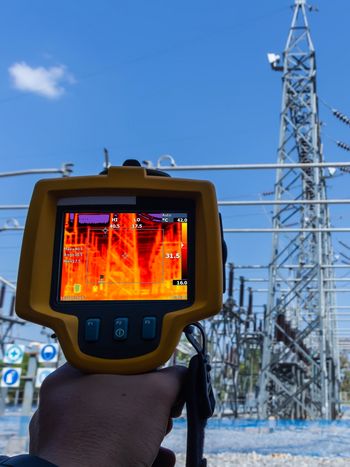Power quality trends in the transition to carbon-free electrical energy systems
Due to the accelerated shift towards a carbon-free electrical energy system, the power system is changing in terms of both planning and operation with an increasing integration of converter-interfaced renewable generation at all voltage levels. Power quality is one of the main areas greatly affected by these changes and provides a field where equipment misoperation, accelerated aging, plant tripping, and loss of production process can take place if it is not managed properly. It is generally accepted that power quality is primarily driven by customer requirements, however, failure to provide a supply within prescribed performance re-quirements can also have a negative impact on system operators, including customer complaints, reputa-tional damage, and financial liability.

By Christian FLYTKJAER & Zia EMIN, SC C4 Chair
The rapid move in transitioning towards electricity production decarbonisation through large-scale deployment of central and distributed renewable energy sources (RES) not only replaces the conventional thermal plants but also introduces an increased number of Power Electronic (PE) converters into the power system. From a power quality perspective, the latter can have both a positive and negative effect depending on the type of disturbance evaluated and also the applied control strategy of the PE-converter.
Although at individual equipment level a great deal of knowledge exists, the understanding of the impact of PE-converters in a combined way and some related phenomena onto the system or within a system is not yet fully developed. However, it is generally accepted that the consequences of poor power quality can have severe financial implications and most studies in the US and Europe indicate a high level of cost if serious problems arise.
Harmonics, which usually is the most pronounced category of power quality, can be present in voltage and current waveforms and harmonic distortion is predominantly caused by non-linear devices connected to the power system. Contrary to linear devices, a non-linear device draws a distorted current even when a perfect sinusoidal voltage waveform is applied to it. As the number of converter-interfaced equipment being connected to power systems increases as the green transition progresses, electric systems around the world will experience an increase in harmonic distortion. An additional impact on this increase will come from the modification of existing distortion levels. The modification is mainly due to the shifting of the resonance point in the system with increased use of capacitive elements (i.e., cables) as well as the reduced system strength.
Having said this, it is also equally important to emphasise that there is an elevated level of interest on the limitation of harmonic emissions. This is driving a trend in the opposite direction to the extent that the harmonic emissions of new plants are reduced at equipment level due to more advanced switching and control technologies being implemented and the stricter enforcement of grid code requirements. It is accepted though, that this cannot be generalized mainly because of the local resonance introduced (or existing ones being shifted) by the use of cables. A trend towards a more profound focus to undertake detailed analysis at the planning stages, to ensure adherence to statutory limits and hence secure power system operation, is however manifesting.
Another equally important power quality area is the so-called voltage variations which refer to the changes of the voltage waveform. Voltage variation could be of a slow nature, varying throughout the day slowly driven by the gradual customer load variation for example, and/or variable RES output. Equally, the variation could be in the form of rapid voltage changes and dips caused by various switching operations. Wind and solar generation can result in larger and more frequent voltage variations due to their intermittency. Such voltage variations can lead to both under voltage and over voltage where both situations can have an impact on network operation and on customer equipment. Generally, the effect will be strongest in power system areas with low system strength.
In distribution networks, overvoltage can lead to excess energy consumption, transformer core saturation and the introduction of increased insulation stresses leading to their premature failure. Under voltage on the other hand can lead to reduced energy consumption, malfunctioning of high-intensity discharge lamps and reduction of torque developed by mains-connected motors. Reduced system strength at transmission levels means that voltage dips, typically caused by system faults, transformer energization, or large motor starting, can become more frequent and severe and will also propagate to downstream distribution networks. Intermittent power output combined with a reduction in system strength will result in a higher volatility in the system voltage at transmission level making fast voltage variations a possible issue at high voltage levels.
Voltage unbalance, simply defined as unequal magnitudes of the phase voltages and/or the phase angles in a multi-phase system, is also coming to the forefront of power quality discussions. At distribution level this is partly due to the proliferation of photovoltaic systems at the low voltage level as single-phase connections. Single-phase PV connections can be altered between the phases but in places where only single-phase laterals are available, all connections end up on the same phase which can lead to significant voltage unbalance levels on three-phase low voltage systems. Other technologies that are expected to have an impact include electric vehicle charging points and heat pumps at the low voltage level. These will have an increased level power capacity and are likely to introduce more voltage unbalance and their capacities may be limited depending on the fault level at the point of connection. Large scale wind and solar farms are often connected at remote locations supplied by relatively long un-transposed lines, and voltage unbalance can arise due to the lines, although the wind or the solar farms do inject balanced currents.
Power quality will continue to be an evolving topic in future power systems as it is expected to be significantly affected by the shift towards a carbon-free electrical energy system. Limited existing experience points to degraded power quality indices of future power systems due to the integration of many power electronics devices, use of power cables at all voltage levels, increasing amount of fluctuating production, and generally reduced system strength. However, the ability to control power electronics is opening the road to the emergence of new possibilities and - if used in a proper manner - many of the challenges introduced can be mitigated by the same components that create them. Doing so successfully requires a high focus on power quality studies both at individual connection and system wide level, focus on grid code requirements and their implementation, and robust system monitoring with a strategic approach.
A Reference Paper entitled “Power Quality Trends in the Transition to Carbon-Free Electrical Energy Systems’’ was published in the flagship CIGRE Science & Engineering Journal’s Volume No 17, February 2020 issue discussing this emerging area in more details. This Reference Paper was prepared by a small task force made up of members from SC C4 – Power System Technical Performance. The paper discusses in details the effects on power quality due to the green transition of the power system.


